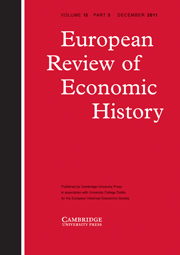Article contents
Why did the first farmers toil? Human metabolism and the origins of agriculture
Published online by Cambridge University Press: 01 August 2009
Abstract
Time-budget studies done among contemporary primitive people suggest that the first farmers worked harder to attain subsistence than their foraging predecessors. This makes the adoption of agriculture in the Stone Age one of the major curiosities in human cultural history. Theories offered by economists and economic historians largely fail to capture work-intensification among early farmers. Attributing a key role to human metabolism, this study provides a simple framework for analysing the adoption of agriculture. It demonstrates how the additional output that farming offered could have lured people into agriculture, but that subsequent population increase would eventually have swallowed up its benefits, forcing early farmers into an irreversible trap, where they had to do more work to attain subsistence compared to their foraging ancestors. The framework draws attention to the fact that, if agriculture arose out of need, as some scholars have suggested, then this was because prehistoric foragers turned down agriculture in the first place. Estimates of population growth before and after farming, however, in the light of the present framework seem to suggest that hunters were pulled rather than pushed into agriculture.
- Type
- Research Article
- Information
- Copyright
- Copyright © European Historical Economics Society 2009
References
- 10
- Cited by


